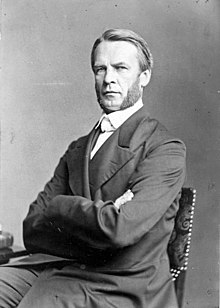Positive union

The Positive Union (actually: Friends of the Positive Union ) was a church party within the Protestant regional church in Prussia .
After the introduction of the presbyterial synodal order in Prussia, a right and a left wing had formed in the area of the Protestant regional church as in political parliamentarism, with a middle party (the Evangelical Association ) in between. On the right wing stood the confessionals who opposed the union between Lutherans and Reformed , on the left the liberals ( German Protestant Association ). However, none of these three directions was successful, but a fourth - the Positive Union.
In 1876, the court preacher Rudolf Kögel founded the Positive Union with the Magdeburg general superintendent Karl Leopold Schultze (hence also called the “court preacher party”) in connection with the new general synodal order. In relation to the liberals, the Positive Union was strictly orthodox (" positive "), but in relation to the denominational it affirmed the Union in Prussia . With this profile she achieved great success in church elections and continuously retained the majority in the general synod until 1914, even though in 1891 she lost her dominant influence on the Evangelical Upper Church Council ; the liberals were left behind and were largely ousted from church life.
The year 1891 marked a crisis in the Positive Union. Adolf Stoecker was not considered in the election to the General Synodal Board. Then the faction split. At the regional church assembly of the Positive Union in 1893, the two wings came together again. Programmatically, Stoecker's group prevailed.
The proximity of the Positive Union to the imperial family was striking. In the last decades of the empire she propagated "an almost religious veneration of the Prussian ruling house" ( Johannes Wallmann ). Wilhelm I committed himself several times to the positive union.
The organ of the Positive Union was the New Evangelical Church Newspaper (NEKZ).
literature
- Rudolf Mau : The formation of the church parties. The dominance of the “positive union” . In: Joachim Rogge , Gerhard Ruhbach (ed.): The history of the Evangelical Church of the Union . Volume 2: The independence of the church under the royal summit episcopate (1850–1918). EVA, Leipzig 1994. ISBN 3-374-01508-5 pp. 233-246.
Individual evidence
- ↑ Klaus E. Pollmann: Regional Church Regiment and Social Issue: The Evangelical Upper Church Council of the Old Prussian Regional Church and the social-political movement of the clergy after 1890 . Walter de Gruyter, Berlin / New York 1973, p. 62.
- ↑ Jörg Breitschwerdt: Theologically conservative: Studies on the genesis and concerns of the evangelical movement in Germany. Vandenhoeck & Ruprecht, Göttingen 2018, p. 284 f.
- ^ Johannes Wallmann: Church history in Germany since the Reformation . Mohr, 4th throughout Edition Tübingen 1993, p. 219.
- ↑ Klaus E. Pollmann: Regional Church Regiment and Social Issue: The Evangelical Upper Church Council of the Old Prussian Regional Church and the social-political movement of the clergy after 1890 . Walter de Gruyter, Berlin / New York 1973, p. 63.

